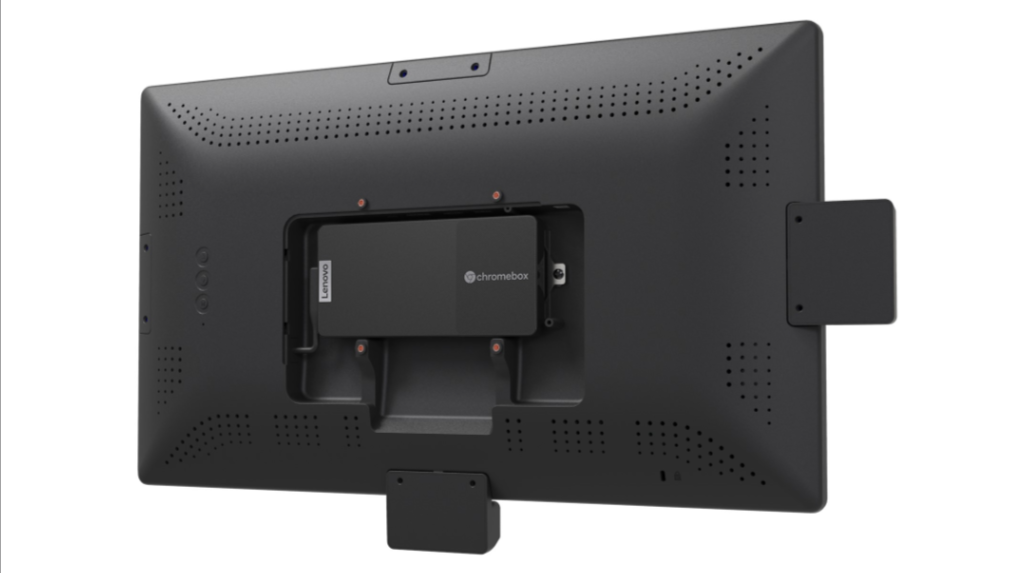Lenovo's Chromebox Micro is a mini-PC running ChromeOS
Hopefully, we'll see these come to consumers.

What you need to know
- Lenovo has announced the Chromebox Micro during the Digital Signage Experience conference and trade show.
- It’s powered by the Intel Celeron N4500, but also features a fanless and ventless design.
- The primary use case for the Chromebox Micro is to power kiosks and digital signage for businesses.
Normally, we don’t cover much in the way that ChromeOS is implemented on the enterprise side of things, but there’s a reason why we’re excited about Lenovo’s announcement of the Chromebox Micro. This new Chromebox was introduced during the Digital Signage Experience, a yearly conference and trade show, where companies get to show off or introduce new solutions for everything from the signs we see on the highway to the kiosks we use at the store.
Getting the boring stuff out of the way first, the Chromebox Micro is powered by the Intel Celeron N4500 chip, paired with 8GB of RAM and 32GB of eMMC storage. There are a total of eight ports found on the Micro, including USB-C, USB-A, Ethernet, HDMI, and more. Lenovo has even gone so far as to make sure that the case has the necessary holes for mounting to the back of a display or monitor, removing the need to figure out a different mounting solution.
| Category | Lenovo Chromebox Micro |
|---|---|
| Processor | Intel Celeron N4500 |
| Memory | 8GB |
| Storage | 32GB eMMC |
| Ports | 2x USB Type-C, 2x USB-A, 1x HDMI, Ethernet, Audio jack, Kensington Lock |
| Dimensions | 163 x 79 x 19.7mm |
| Weight | 450g |
What has us excited about the Chromebox Micro is the form factor, as the case is less than 6.5 inches long, and just over 3 inches wide, all while sporting a fanless and ventless design. To provide a bit of reference, the Acer Chromebox CXI5 launched earlier this year, but is more than 7 inches long and 7 inches wide, taking up much more space than the Chromebox Micro.
It’s not so much that Lenovo released a new Chromebox, but instead, this is a great example of what’s possible using this kind of form factor. No, the Celeron N4500 isn’t anything to write home about, and you can’t upgrade the RAM or the storage, but there are still eight ports packed into this case, and again, you’ll never have to worry about hearing the fans spin up.

Now, imagine a small form-factor Chromebox that is powerful enough to handle all of your daily tasks, but can also be quickly and easily packed up to take with you if you need to go out of town. Another option is to mount a Chromebox to the back of the TV in your living room, providing a dedicated way to play your favorite cloud gaming services, without being inundated with ads or needing to rely on underpowered streaming devices.
That’s probably not what Lenovo envisioned when it set out to create the Chromebox Micro, but there are more than a few different applications for a Chromebox like this that extend into the world of consumers. Now, we just have to hope that something like this actually comes to fruition and doesn’t just remain in the enterprise market.
Get the latest news from Android Central, your trusted companion in the world of Android

Andrew Myrick is a Senior Editor at Android Central. He enjoys everything to do with technology, including tablets, smartphones, and everything in between. Perhaps his favorite past-time is collecting different headphones, even if they all end up in the same drawer.
